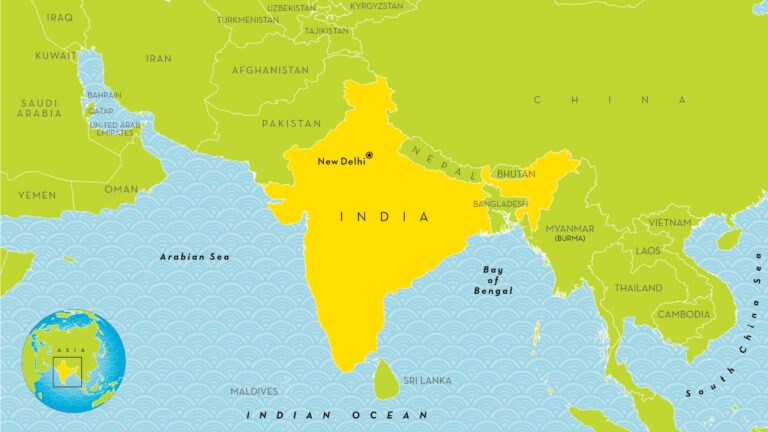India has set an ambitious $1 trillion target to transform itself into a dominant maritime powerhouse, signaling a strategic push to leverage its vast coastline and maritime resources. The initiative, outlined in a recent policy framework, aims to boost the country’s shipping, port infrastructure, and naval capabilities, positioning India as a key player in global trade and security. This bold plan underscores New Delhi’s commitment to enhancing economic growth through maritime avenues while reinforcing its presence in the increasingly contested Indo-Pacific region.
India’s Strategic Investment in Maritime Infrastructure to Boost Economic Growth
India is accelerating its push to enhance maritime capabilities with a strategically planned investment exceeding $1 trillion. This ambitious endeavor is aimed at transforming the country into a dominant maritime force by 2030. Key initiatives focus on expanding port capacities, modernizing shipping infrastructure, and promoting homegrown shipbuilding industries. Government-backed policies are incentivizing private sector participation, while advanced technologies like AI-driven logistics and green shipping solutions are being integrated to ensure sustainable growth. These developments are expected to significantly reduce logistical costs, increase export competitiveness, and create millions of new jobs across coastal states.
Critical to this transformation is the modernization of India’s major ports, alongside the construction of new transshipment hubs. The government’s vision encompasses:
- Upgrading 12 major ports with state-of-the-art facilities
- Developing 15 new deep-water ports along strategic locations
- Enhancing connectivity through dedicated freight corridors
- Investing in green energy-powered maritime infrastructure to reduce carbon footprint
| Project | Investment ($ billion) | Completion Year |
|---|---|---|
| Jawaharlal Nehru Port Expansion | 8.5 | 2026 |
| Dedicated Freight Corridor Linking Ports | 12.0 | 2028 |
| Green Maritime Logistics Hub | 5.3 | 2025 |
| New Deep-water Transshipment Port | 10.0 | 2029 |
Expanding Naval Capabilities to Secure Key Shipping Lanes and Regional Influence
India’s strategic push to enhance its naval forces is reshaping the balance of power across the Indo-Pacific region. With the ambitious $1 trillion naval modernization program underway, the Indian Navy is acquiring cutting-edge warships, submarines, and surveillance systems designed to protect vital maritime corridors. This initiative ensures uninterrupted flow in key shipping lanes such as the Strait of Malacca and the Arabian Sea, which are critical for international trade and energy supplies. The expansion not only safeguards commercial interests but also fortifies India’s ability to project power far from its shores.
Key elements of this naval expansion include:
- Development of indigenous aircraft carriers and advanced destroyers
- Enhanced anti-submarine warfare capabilities with new stealth submarines
- Deployment of state-of-the-art maritime drones and surveillance satellites
- Strengthening of regional alliances through joint naval exercises and technology sharing
| Capability | Focus Area | Impact |
|---|---|---|
| Carrier Strike Groups | Power Projection | Enables blue-water operations |
| Submarine Fleet | Sea Denial & Defense | Countering rival naval forces |
| Maritime Surveillance | Real-Time Monitoring | Secures critical shipping routes |
| Regional Partnerships | Diplomatic & Strategic | Enhances collective security |
Enhancing Public-Private Partnerships for Sustainable Development of Ports and Shipbuilding
India’s ambitious maritime agenda is gaining momentum through a strategic strengthening of public-private partnerships (PPPs) that aim to revolutionize its ports and shipbuilding industry. The government’s proactive approach in inviting private sector expertise and capital is set to enhance operational efficiency and innovation across the sector. By leveraging advanced technology, sustainable practices, and robust policy frameworks, these collaborations will create a resilient infrastructure capable of handling increasing maritime traffic and boosting export-import activities.
Key areas earmarked for transformation include:
- Smart ports development with integrated digital systems to streamline cargo handling
- Green shipbuilding initiatives focusing on eco-friendly materials and emission reductions
- Skill development programs designed to nurture a future-ready workforce in maritime logistics and engineering
- Innovation hubs for fostering startups and technology-driven solutions in naval architecture and marine engineering
| Focus Area | Expected Impact | Timeline |
|---|---|---|
| Smart Port Infrastructure | 30% reduction in turnaround time | By 2026 |
| Eco-Friendly Shipbuilding | 40% lower carbon emissions | By 2028 |
| Workforce Upskilling | 50,000 skilled professionals trained | By 2025 |
To Wrap It Up
As India sets sail on its ambitious $1 trillion maritime journey, the nation aims to not only enhance its naval capabilities but also to assert its strategic influence across key global trade routes. With significant investments in port infrastructure, shipping, and maritime technology, India is positioning itself as a formidable maritime power in the Indo-Pacific region. The success of this massive initiative will be pivotal in shaping regional geopolitics and securing India’s economic future in an increasingly interconnected world.




